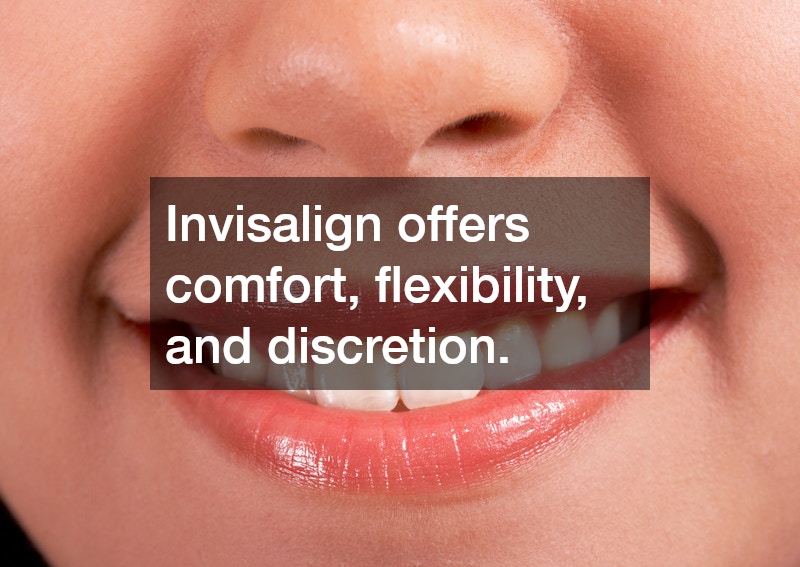Invisalign vs. Braces: Which Is Right for Your Smile?
The world of orthodontics has evolved dramatically in recent years, offering patients more choices than ever before to achieve a straighter, healthier smile. Two of the most popular options, Invisalign and traditional braces, each come with their own advantages, challenges, and considerations. Understanding the key differences between these treatments can help you make an informed decision based on your unique needs, preferences, and lifestyle.
What Are the Main Differences Between Invisalign and Braces?
Appearance and Visibility
One of the most noticeable distinctions between Invisalign and braces is their appearance. Invisalign aligners are made from clear, medical-grade plastic that fits snugly over your teeth, making them virtually invisible to others. This discreet design makes Invisalign especially appealing for adults and teens who want to straighten their teeth without the visible hardware of traditional braces. Braces, on the other hand, use metal brackets and wires that are easily seen when you smile or speak. While ceramic braces can blend more with natural tooth color, they are still more noticeable than clear aligners.
Treatment Duration
Treatment timelines for Invisalign and braces depend largely on the complexity of your case and how closely you follow your orthodontist’s recommendations. On average, Invisalign treatment can take anywhere from 6 to 18 months, while traditional braces may require 18 to 24 months or longer. Invisalign trays need to be worn 20 to 22 hours per day for best results, and skipping days can delay progress. Braces, because they remain fixed to your teeth, work continuously but may require more frequent adjustments at your orthodontist’s office.
Costs and Affordability
Cost is often a deciding factor when choosing between Invisalign and braces. Invisalign typically costs between $3,500 and $7,000, depending on the duration and complexity of treatment. Traditional braces usually range from $3,000 to $6,500. Many dental insurance plans cover both options to a similar extent, and most orthodontic offices offer flexible payment plans. While Invisalign may have a slightly higher upfront cost, its convenience, aesthetics, and comfort can make it a worthwhile investment for many patients.
Who Is a Suitable Candidate for Invisalign or Braces?
Age and Eligibility
Both Invisalign and braces are suitable for a wide range of patients, but certain age groups may benefit more from one option over the other. Invisalign is often recommended for older teens and adults who can commit to wearing their aligners as instructed. Younger patients may be better suited for braces, as the fixed system ensures consistent progress without relying on compliance.
Types of Orthodontic Issues
The type of misalignment you have plays a key role in determining the right treatment. Invisalign effectively corrects mild to moderate cases of crowding, spacing, and alignment issues. Braces, however, can handle more complex problems such as severe overbites, underbites, and significant tooth rotations. Your orthodontist will evaluate your bite and overall dental structure to determine which method will achieve the best long-term results.
Lifestyle Considerations
Lifestyle can also influence which treatment is best. Invisalign aligners can be removed for eating, drinking, brushing, and special occasions, offering flexibility and freedom. This makes them an excellent choice for those with active social lives or professional roles where appearance matters. Braces require more adjustments to diet and oral care routines, as certain foods can damage the brackets or wires. However, since braces stay in place at all times, they eliminate the risk of forgetting to wear your aligners or losing them.
What Are the Pros and Cons of Invisalign and Braces?
Comfort and Convenience
Invisalign aligners are designed with smooth edges that minimize irritation to the gums and cheeks. The ability to remove them also means fewer dietary restrictions and easier oral hygiene. Braces can sometimes cause discomfort after adjustments and may lead to minor irritation, but they require less daily management overall.
Maintenance and Hygiene
Keeping up with oral hygiene is generally easier with Invisalign since you can remove the trays to brush and floss normally. Aligners must be cleaned regularly to prevent staining and bacteria buildup. Braces, on the other hand, require careful brushing and flossing around brackets and wires. Special tools such as interdental brushes and floss threaders can help maintain good hygiene throughout treatment.
Effectiveness and Results
Both Invisalign and braces deliver excellent results when used correctly. Braces have a proven track record for treating even the most complex orthodontic cases, while Invisalign provides predictable, computer-modeled results for most mild to moderate cases. Patient compliance plays a major role in Invisalign success, while braces maintain progress automatically due to their fixed design.
Both Invisalign and traditional braces can help you achieve a straighter, healthier smile, but the best choice depends on your specific dental goals, lifestyle, and budget. Invisalign offers comfort, flexibility, and discretion, while braces provide reliability and precision for complex issues. The most effective way to decide is by consulting with your orthodontist, who can evaluate your needs and create a personalized treatment plan that leads to lasting confidence in your smile.

